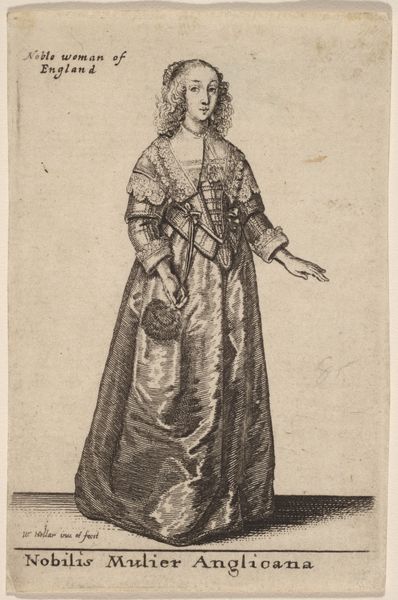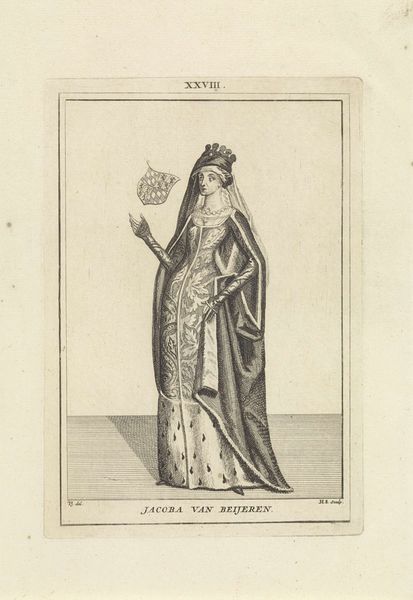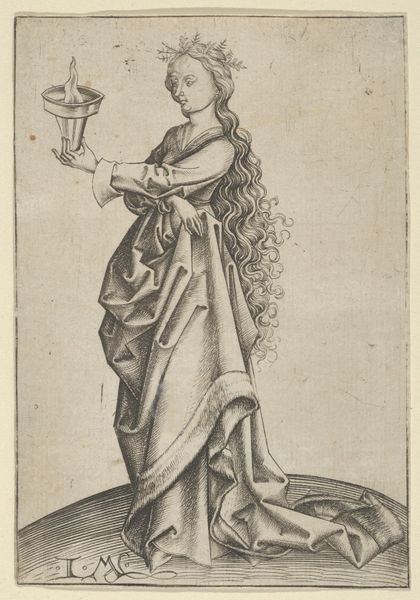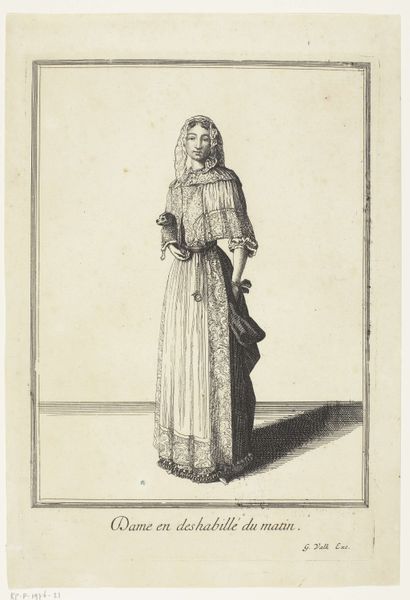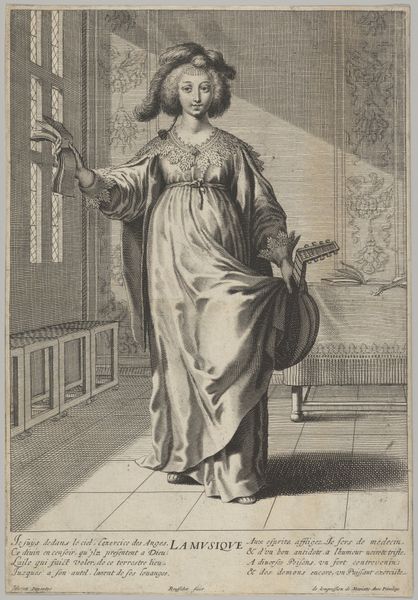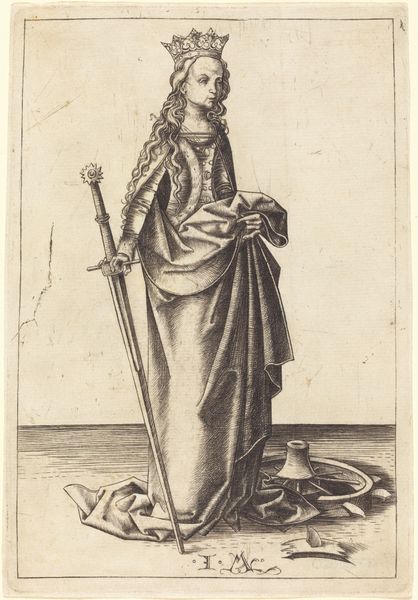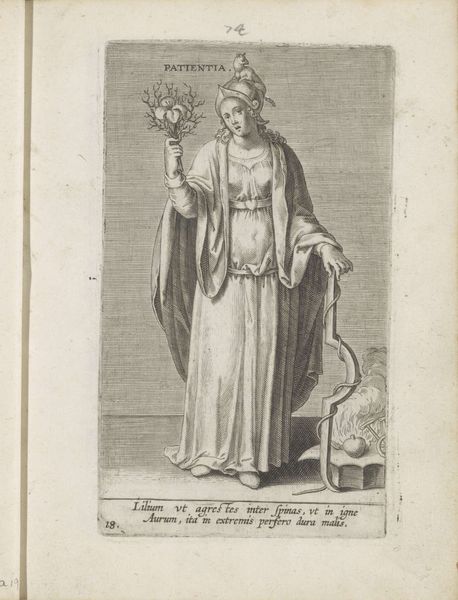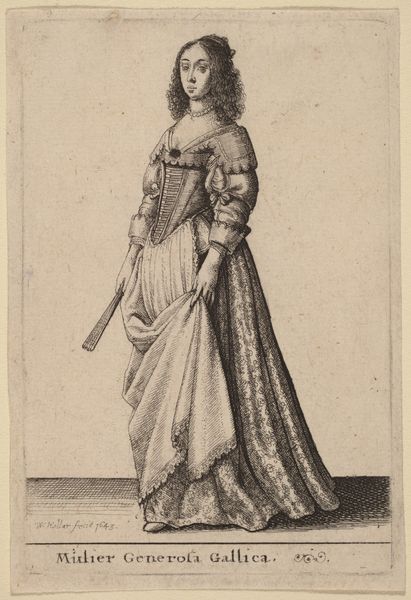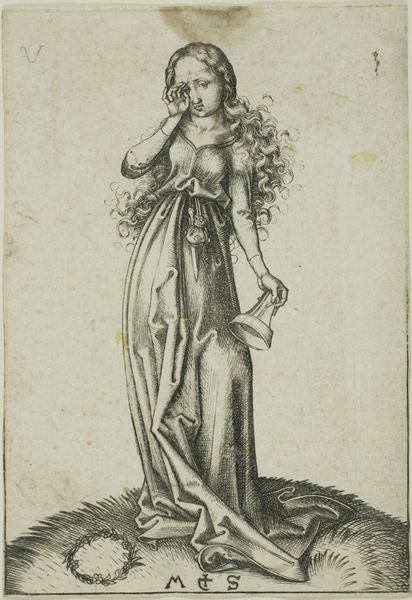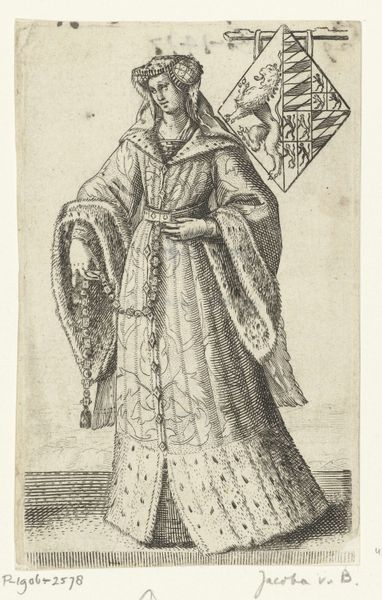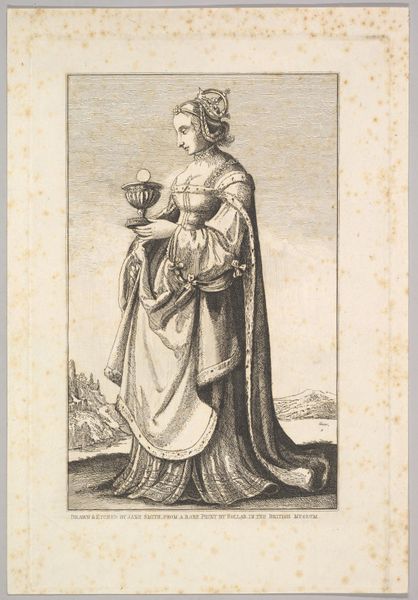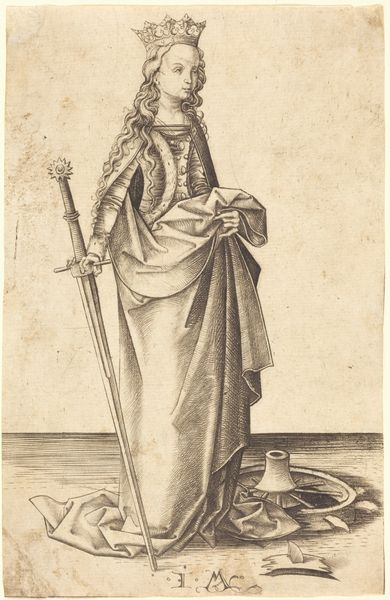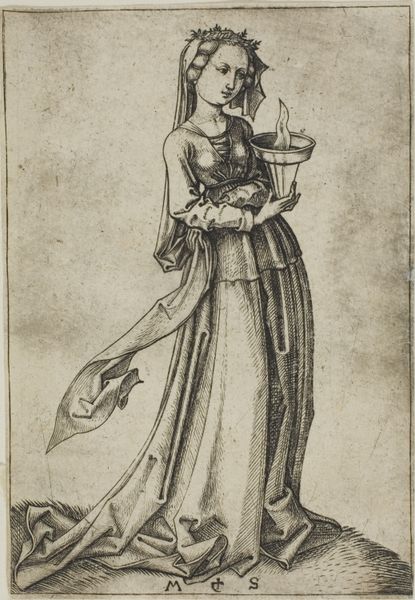
print, engraving
#
portrait
#
baroque
# print
#
old engraving style
#
dress
#
engraving
Dimensions: height 245 mm, width 145 mm, height 35 mm, width 145 mm
Copyright: Rijks Museum: Open Domain
Editor: We’re looking at Conrad Buno’s “Portrait of Clara Augusta von Braunschweig-Wolfenbüttel,” a print from 1650 held in the Rijksmuseum. I am struck by the detail achieved in this baroque engraving, particularly in rendering the texture of her dress. What visual elements do you find most compelling? Curator: I would draw your attention to the construction of pictorial space itself. Note how the arched doorway frames her figure, creating a separation, a pictorial proscenium of sorts. The linear precision evident in the engraving technique accentuates this separation. How do you read the lines' varying weight? Editor: I hadn't considered the spatial dynamics so explicitly. I see now how the starkness of the lines emphasizes the subject, almost like she's in relief. Is it possible that the relative sharpness of the lines has a semiotic function here? Curator: Indeed. Line becomes the defining element. Observe the patterns formed by her garments. This linearity flattens form to emphasize surface. The visual is reduced to its elements and carefully recombined. Editor: So the emphasis isn’t necessarily on representing reality accurately, but on creating a structured, symbolic arrangement through formal choices? Curator: Precisely. The contrast in textures serves an expressive function in conveying this reality. In the top corners, notice Temperantia and Vigilantia. Consider the relationships between text, symbolic representation, and this woman in the print. Editor: The combination of the symbols above her head alongside her garments creates this impression of layered meanings beyond just representation, where each element relates and builds. This formalist analysis makes me consider how later portraiture plays with the formal tools you describe to shape a visual message. Curator: It allows us to look at these images through the lens of visual organization in addition to symbolism.
Comments
No comments
Be the first to comment and join the conversation on the ultimate creative platform.
